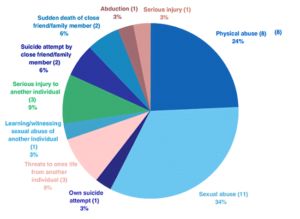

Lord, C., Risi, S., Lambrecht, L., Cook Jr, E. The Autism Diagnostic Observation Schedule (ADOS) Journal of autism and developmental disorders, 24(5), 659-685. Autism Diagnostic Interview-Revised: a revised version of a diagnostic interview for caregivers of individuals with possible pervasive developmental disorders. The Autism Diagnostic Interview – Revised (ADI-R)

Therefore, if one is looking for a complete diagnostic measure for autism one is are perhaps better off using a standardized assessment such as: This is a two-item “measure” which assesses for severity level. In terms of assessment for ASD, the DSM-5 lists one disorder-specific severity measure for autism and social communication disorders, which is Clinician-Rated Severity of Autism Spectrum and Social Communication Disorders (). Though controversial, this effectively and officially does away with the diagnosis of “asperger’s disorder.” The DSM-5 dictates that persons with a well-established DSM-IV-TR diagnosis of autistic disorder, asperger’s disorder, or pervasive developmental disorder not otherwise specified should be given the diagnosis of ASD.
#Autism dsm 5 code
Finally, the specifier “with catatonia” can also be used but the additional code 293.89 (F06.1) catatonia associated with autism spectrum disorder should be used. Other specifiers include with or without accompanying intellectual impairment and/or accompanying language impairment.Ĭounselors should also specify whether the diagnosis is associated with a known medical or genetic condition or environmental factor (If the diagnosis is associated with a medical/genetic/environmental condition or factor, a separate code should be used to identify the issue). For example, a child who meets the criteria for ASD and needs intense support for deficits in social communication, but only moderate support for restrictive repetitive behaviors, would be diagnosed as:į84.0 Autism Spectrum Disorder, requiring very substantial support for deficits in social communication and requiring substantial support for restrictive repetitive behaviors.

These would be listed with the severity level indicated as well as for which impairment (e.g., social communication and/or repetitive patterns of behavior).


 0 kommentar(er)
0 kommentar(er)
